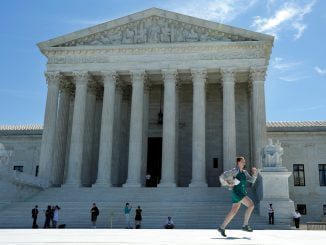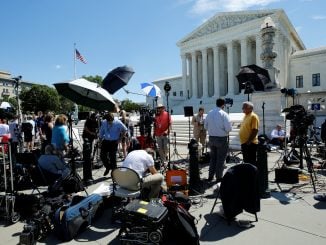
The Supreme Court heard arguments last week about a redistricting case in Wisconsin that some believe was “too extreme” when it came drawing state legislative maps purely for partisan political purposes.
What is “too extreme?”
How about a congressional district that was drawn in North Carolina that was 91percent Democrat by registration in 1984? Would that today be considered too extreme for partisan political purposes by everyone concerned about gerrymandering?
That was the makeup of the Second Congressional District I ran in during the 1984 campaign as a Republican. Sadly, the same masses of lawyers and advocates who are today running to the Supreme Court to declare gerrymandering as “unconstitutional” in any way, shape or form were not as concerned about it in 1984.
The issue of drawing legislative districts is a specific constitutional duty given to state legislatures in Article I, Section 2, Clause 3 of the US Constitution to coincide with every decennial census.
Alexander Hamilton argued during the ratification process in New York that “the true principle of a republic is, that the people should choose whom they please to govern them.”
When it comes to redistricting, that means state legislatures. Not the Supreme Court. Or the president. Not even the U.S. Congress or Senate. The elected representatives closest to the voters themselves are the elected representatives in state legislatures and general assemblies.
The Supreme Court has assiduously stayed away from issuing firm definitive rules and parameters for redistricting since 1789 mainly because the Court has consistently seen it as an issue specifically reserved for the state legislatures to handle, for better or worse.
Governor Elbridge Gerry himself started it all in 1812 during the war with England, when he signed a state legislative redistricting plan to benefit and advantage his Democratic Republican Party in Massachusetts.
The North Carolina General Assembly has a long and proud history of drawing partisan gerrymandered districts at the federal and state level long before the Republicans took over control in 2010. All of it by Democrats since at least 1898.
What are some fair, common-sense ways to perhaps put some boundaries on gerrymandering without having the Supreme Court dictate the makeup of every legislative map going forward.
They could rule that in order to insure “one-man, one-vote” equality of all citizens who are registered to vote, districts should be drawn in a relatively compact, contiguous manner that follows existing county or municipal lines where people have a “community of interest” they can elect representatives to represent them on.
Rural districts have nothing in common with a big-city representative who doesn’t know what “gee” and “haw” means to a farmer. Metropolitan areas don’t need to be represented by elected officials who have no idea of what a two hour commute is to work since they may walk to work every day to name just one example.
If the Supreme Court unwisely sets specific percentage targets for redistricting by party, what happens if Democrats change their party to “Progressive” and Republicans change their name to “Conservative?” Do they have to go rule again?
What happens if parties change philosophy over time as has happened many times in American history? Would the same percentages still hold if the Supreme Court rules in such specificity?
What about unaffiliateds today? Should they be mechanically drawn into districts so they can win by an arcane formula concocted by a majority of 9 unelected Supreme Court Justices in order to mete out “fair representation” for those registered voters?
If the Supreme Court issues specific dictates governing redistricting, which is clearly a state prerogative in the Constitution, they might as well retroactively disqualify every district drawn in America since 1789 and say the Founders got it all wrong and the Supreme Court should have been the legislative map-drawers from the beginning.



